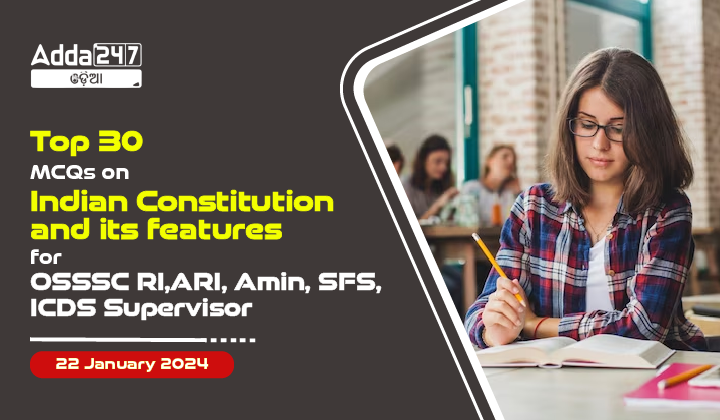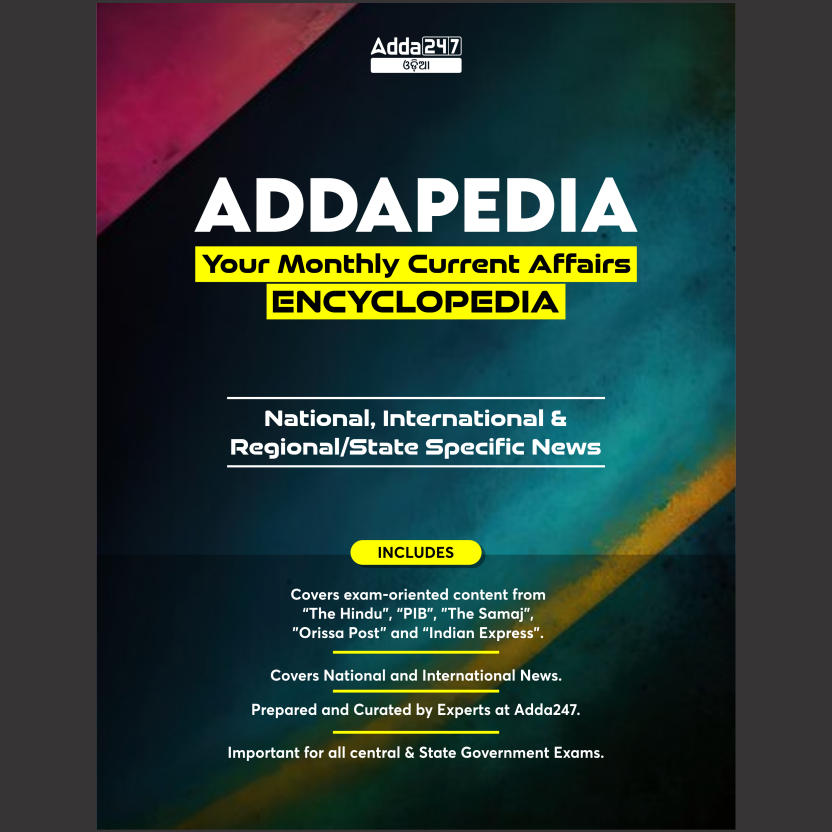The Indian Constitution, a foundational document that governs the world’s largest democracy, is a crucial topic for various competitive exams such as OSSSC RI, ARI, AMIN, SFS, ICDS Supervisor, and others. To help you prepare effectively, here are 30 Multiple Choice Questions (MCQs) that cover various aspects of the Indian Constitution and its features. Test your knowledge and solidify your understanding of this important subject.
Top 30 MCQs on Indian Constitution and its features for OSSSC RI, ARI, AMIN,SFS, ICDS Supervisor
Mastering the intricacies of the Indian Constitution is crucial for success in exams like OSSSC RI, ARI, AMIN,SFS, ICDS Supervisor. These 30 MCQs cover a range of topics, allowing aspirants to evaluate their knowledge and focus on areas that require further attention. Keep honing your understanding of the Constitution to excel in your preparations and future endeavors.
1. What is the preamble of the Indian Constitution?
a. Introduction to the Constitution
b. Fundamental Rights
c. Directive Principles of State Policy
d. Citizenship
Answer: a. Introduction to the Constitution
2. Who is known as the ‘Father of the Indian Constitution’?
a. Mahatma Gandhi
b. Dr. B.R. Ambedkar
c. Jawaharlal Nehru
d. Sardar Patel
Answer: b. Dr. B.R. Ambedkar
3. The Indian Constitution was adopted on:
a. 26th January 1950
b. 15th August 1947
c. 26th November 1949
d. 2nd October 1952
Answer: c. 26th November 1949
4. Which part of the Constitution deals with Citizenship?
a. Part I
b. Part II
c. Part III
d. Part IV
Answer: b. Part II
5. How many schedules does the Indian Constitution have?
a. 20
b. 12
c. 25
d. 30
Answer: b. 12
6. The idea of Fundamental Rights is borrowed from the Constitution of:
a. USA
b. UK
c. France
d. Canada
Answer: a. USA
7. Who is the ex-officio Chairman of the Rajya Sabha?
a. President of India
b. Vice President of India
c. Prime Minister
d. Speaker of the Lok Sabha
Answer: b. Vice President of India
8. How many members are nominated by the President to represent the Anglo-Indian community in the Lok Sabha?
a. 1
b. 2
c. 3
d. None
Answer: b. 2
9. What is the maximum strength of the Lok Sabha previously?
a. 512
b. 545
c. 552
d. 550
Answer: c. 552
Explanation: The correct answer is 552. Previously The maximum strength of Lok Sabha as envisaged by the Constitution was 552.
10. Who appoints the Chief Justice of India?
a. President
b. Prime Minister
c. Chief Justice of India
d. Collegium
Answer: a. President
11. Who moved the Objective Resolution, forming the basis of the Preamble of the Constitution of India, in the Constituent Assembly on Dec. 13, 1946?
(A) Sardar Vallabhbhai Patel
(B) Acharya J.B. Kripalani
(C) Jay Prakash Narayan
(D) Pandit Jawahar Lal Nehru
Answer: D
12. What is the term of office for a Governor of a state?
(A) 4 years
(B) 5 years
(C) 6 years
(D) 3 years
Answer: B
12. What is the term of office for a Governor of a state?
(A) 61st Amendment Act
(B) 73rd Amendment Act
(C) 86th Amendment Act
(D) 91st Amendment Act
Answer: (A) 61st Amendment Act
14. What is the maximum strength of the Lok Sabha now?
(A) 512
(B) 545
(C) 552
(D) 550
Answer: D. 550
Explanation: The Constitution of India allows for a maximum of 550 members in the House, with 530 members representing the States and 20 representing the Union Territories. At present, the Lok Sabha has 543 seats filled by elected representatives.
15. Who appoints the Chief Justice of India?
(A) President
(B) Prime Minister
(C) Chief Justice of India
(D) Collegium
Answer: A. President
16. The Directive Principles of State Policy are contained in which part of the Constitution?
(A) Part II
(B) Part III
(C) Part IV
(D) Part V
Answer: C. Part IV
17. What is the retirement age for Supreme Court judges?
(A) 60 years
(B) 62 years
(C) 65 years
(D) 70 years
Answer: C. 65 years
18. How many parts does the Indian Constitution have?
(A) 20
(B) 22
(C) 25
(D) 30
Answer: C. 25
19. Who can initiate impeachment proceedings against the President of India?
(A) Lok Sabha
(B) Rajya Sabha
(C) Either House of Parliament
(D) Supreme Court
Answer: C. Either House of Parliament
20. The President can declare a national emergency on the grounds of:
(A) External Aggression
(B) Armed Rebellion
(C) Failure of Constitutional Machinery
(D) All of the above
Answer: D All of the above
21. Which Article of the Constitution deals with the right to education?
a. Article 21
b. Article 19
c. Article 15
d. Article 14
Answer: a. Article 21
22. Which part of the Constitution is called the Magna Carta?
b. Part III
c. Part IV
d. Part V
Answer: b. Part III
23. Which of the following commission was appointed by the Central Government on Union-State relations in 1983?
a. Rajamannar commission
b. Dutt commission
c. Setalvad commission
d. Sarkariya commission
Answer: d
24. What is the term of office for a Chief Minister a state?
a. 4 years
b. 5 years
c. 6 years
d. 3 years
Answer: b. 5 years
25. Who is the head of the State Council of Ministers?
a. President
b. Chief Minister
c. Chief Justice of India
d. Governor
Answer: b. Chief Minister
26. Which Article of the Constitution deals with the right to freedom of religion?
a. Article 25
b. Article 30
c. Article 19
d. Article 26
Answer: d. Article 26
27. Which taxes are levied by the Union government but collected and appropriated by the states?
a. Stamp duties
b. Excise duties on medical and toilet materials
c. Sales tax
d. both a and b
Answer: d
28. Who can initiate impeachment proceedings against the President of India?
a. Lok Sabha
b. Rajya Sabha
c. Either House of Parliament
d. Supreme Court
Answer: c. Either House of Parliament
29. The 73rd Amendment Act of 1992 is related to:
(A) Panchayati Raj Institutions
(B) Reservation of seats for Scheduled Castes and Scheduled Tribes
(C) Anti-Defection Law
(D) Powers and functions of Governors
Answer: A.Panchayati Raj Institutions
30. The Indian Parliament is based on the model of the Parliament of:
a. USA
b. UK
c. Canada
d. Australia
Answer: b. UK











